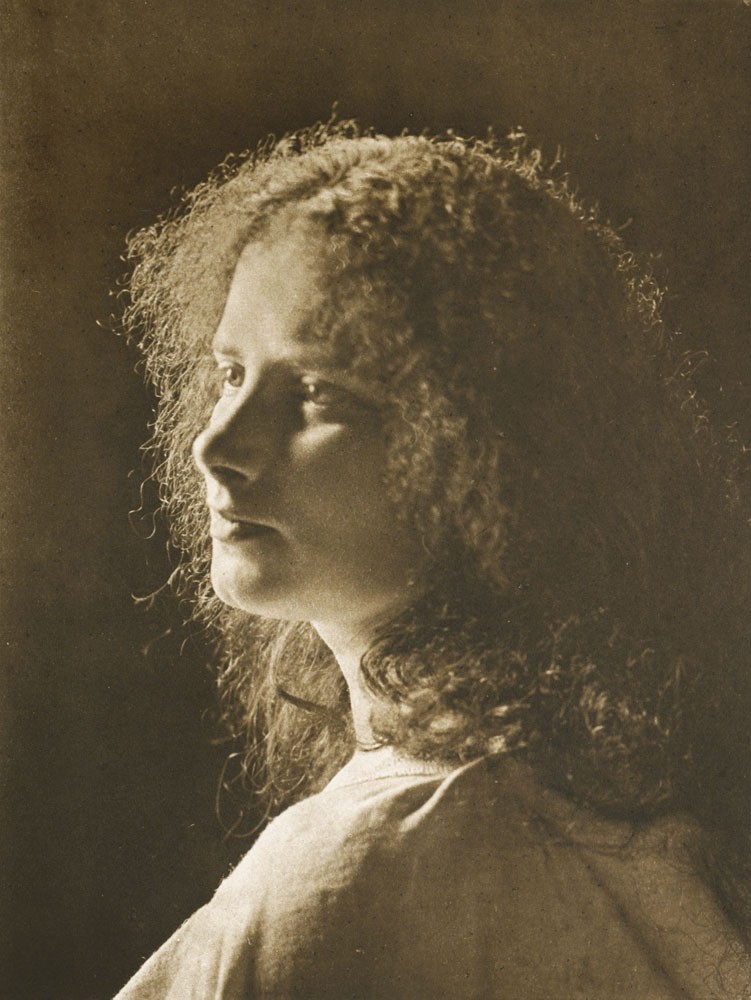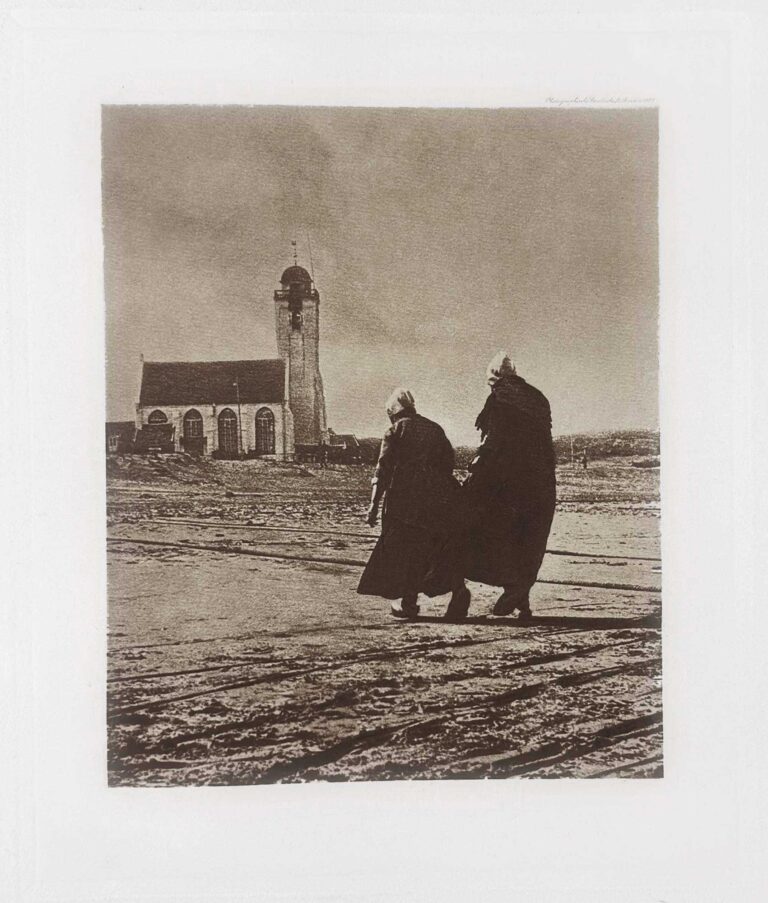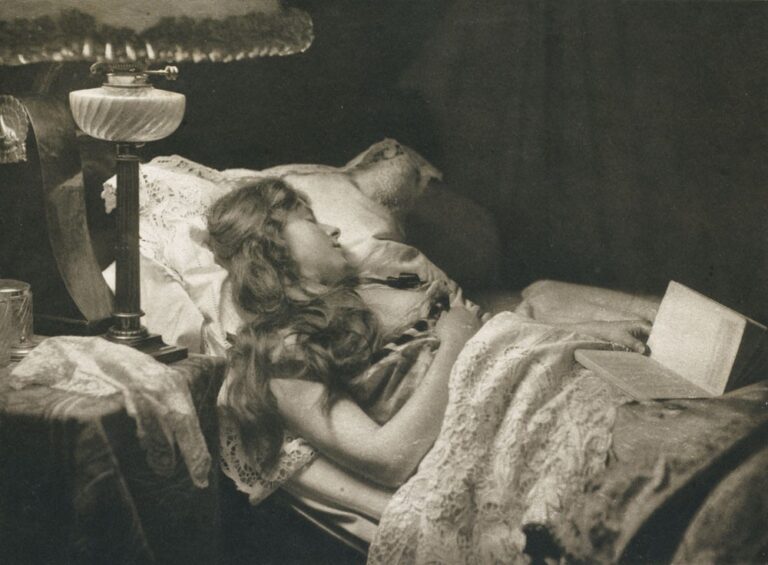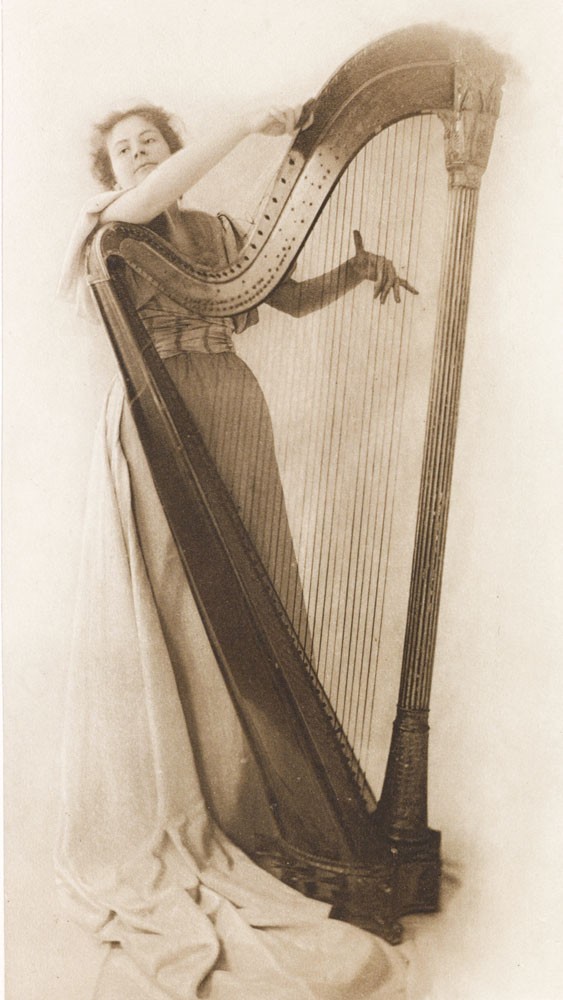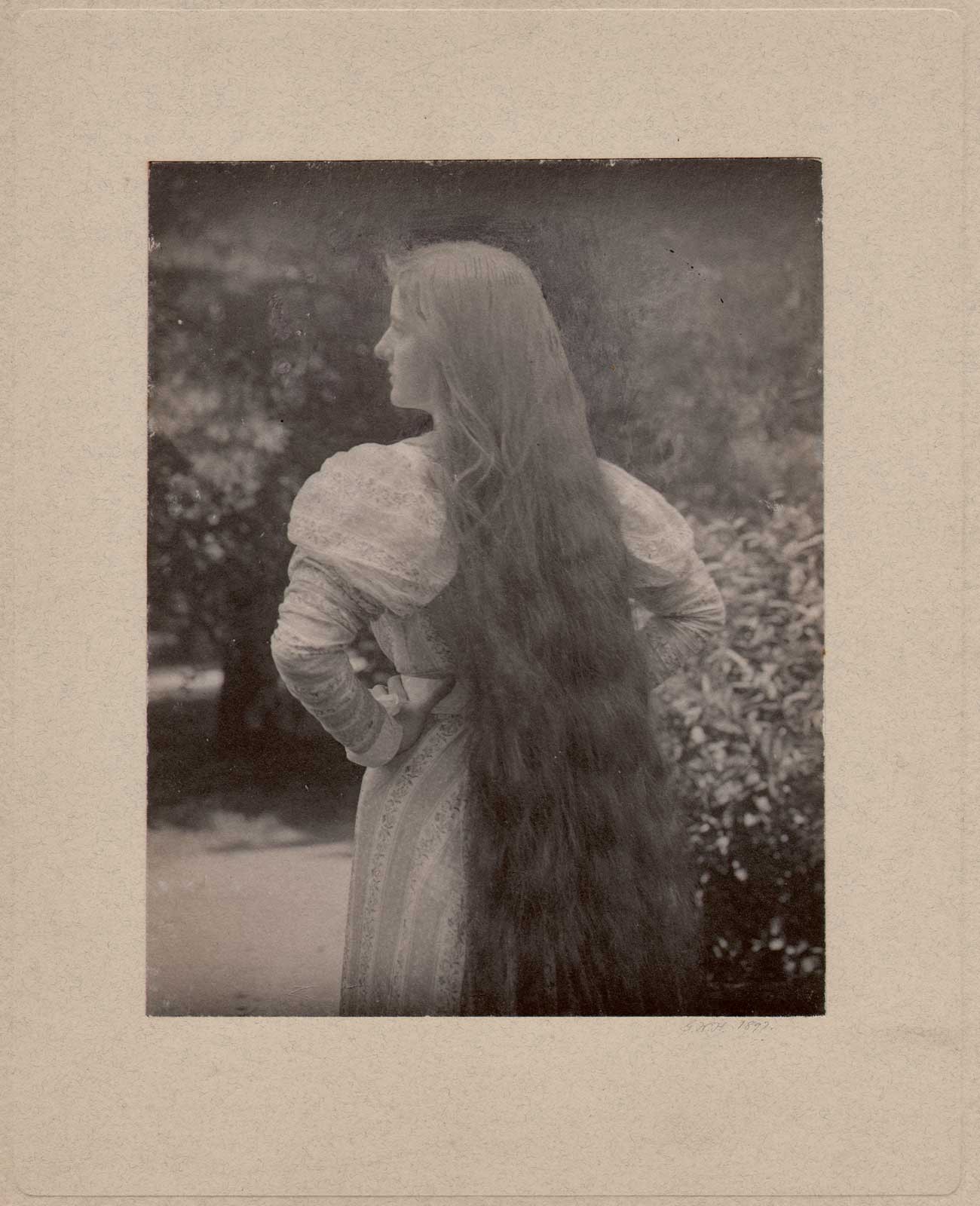
Woman with Long Hair
A woman with hair well below her waist, perhaps the photographer George Wattson Hewitt’s second wife Isabel Rinehart Pugh, (1858-1945) is photographed in a garden setting. Hewitt, an important American architect who along with Frank Furness designed parts of the Philadelphia Academy of Fine Arts among other fine buildings, was an early and active member of the Photographic Society of Philadelphia. He was an amateur photographer and avid amateur astronomer who built his own telescopes, and is credited by John Carbutt in an 1897 Photographic Times article for having been the first in the United States to make a gelatine dry plate after it was invented in England in 1876. As early as 1874, Hewitt is listed as an exhibitor under the Fine Arts & Photography category of the Franklin Institute Exhibition in Philadelphia and by 1879 was listed as Vice Chairman of the Photographic Society of Philadelphia in the June 27th issue of The British Journal of Photography.
The following biography and history of George Wattson Hewitt appears as part of background supplied on a collection of glass plates by Hewitt held in the Historical and Interpretive Collections of The Franklin Institute in Philadelphia:
Biography | History: George Wattson Hewitt | 1841-1916
George Wattson Hewitt (1841-1916) was an architect active in Philadelphia, Pennsylvania, and was involved in the design of several well-known buildings, including the Bellevue-Stratford Hotel, the Philadelphia Bourse, and the Library of the University of Pennsylvania. He worked with noted Philadelphia architect Frank Furness from 1867 to 1875, when they dissolved their partnership. From 1875 to 1878, Hewitt worked on his own and then opened a new firm in 1878 with his brother, where he remained until he retired in 1907. Hewitt passed away in 1916.
George Wattson Hewitt (1841-1916) was born in 1841 in Philadelphia, Pennsylvania to George Washington Hewitt (1811-1893) and Anne Wattson Barrington Hewitt (1819-1907). When he was a child, Hewitt’s family moved to Burlington, New Jersey. Hewitt attended Burlington College and returned to Philadelphia to seek a position in an architecture firm. He worked for architect Joseph C. Hoxie from 1857 to 1859, during which time he was involved with several design projects for churches. In 1859, Hewitt transferred to the office of John Notman, where he helped to complete work on St. Clement’s church and Parish school at 20th and Cherry streets and Holy Trinity Church at 19th and Walnut streets in Philadelphia. Notman died in 1865, and Hewitt joined the architect John Fraser, where Hewitt helped to complete the construction of the tower for St. Mark’s Church, which had been left incomplete when Notman died.
In 1867, Hewitt met architect Frank Furness and that same year they opened a new firm, Fraser, Furness, & Hewitt. Fraser resigned in 1871 when he moved to Washington, D.C. and the firm was renamed Furness & Hewitt. The firm worked on several notable buildings in Philadelphia, banks, churches, and private residences. In 1875, Furness and Hewitt dissolved their partnership and Hewitt began working on his own until he added his brother, William Dempster Hewitt (1847-1924) to the firm in 1878, changing the name to G. W. & W. D. Hewitt, or Hewitt & Hewitt. Towards the end of the 19th century Hewitt moved back to Burlington, NJ and retired from Hewitt & Hewitt in 1907. He passed away in 1916 in Philadelphia, PA and is buried in the churchyard of St. Mary’s Episcopal Church in Burlington, NJ.
Among the buildings Hewitt designed or helped to design are the Bellevue-Stratford Hotel, the Philadelphia Bourse, the Bullitt Building, the Library of the University of Pennsylvania, part of the Philadelphia Academy of Fine Arts, the Fourth Street addition to the Fidelity Trust and Safe Deposit Company, a portion of St. James Church, including the tower, a part of Holy Trinity Church, and numerous other buildings.
Hewitt married Elizabeth Gilliams (1842-1887) and they had two children: George Notman Hewitt (1869-1898) and Anne Hewitt (1872-1887). After his wife died, Hewitt married Isabel Rinehart Pugh (1858-1945). His two favorite hobbies were astronomy and photography, both of which he continued to enjoy after his retirement in 1907. Hewitt was a member of the Board of Directors of the Mercantile Library, the president of the Burlington, NJ Library, a member of the Musical Fund Society and the American Institute of Architects, and he was a honorary member of the T-Square Club. Mr. Hewitt was a vestryman of St. Mary’s Church in Burlington, NJ. (1.)
The following obituary of Hewitt appeared in the August, 1916 issue of the Journal of the American Institute of Architects:
Obituary
George Wattson Hewitt
Died May 12, 1916
In the death of George Wattson Hewitt, on May 12, last, Philadelphia lost the dean of the architectural profession of that city. Born in Philadelphia on September 16, 1841, his boyhood was passed in Burlington, N. J. He was educated at Burlington College. In 1859, he entered the office of John Notman, the leading architect of his time, and a man far in advance of his day.
On Mr. Notman’s death, Mr. Hewitt entered the office of Mr. John Fraser, under the firm name of Fraser, Furness & Hewitt. About 1871, Mr. Fraser went to Washington as Acting Supervising Architect of the Treasury Department, the Philadelphia office being continued by the other partners.
In 1875, Mr. Furness withdrew from the firm and Mr. Hewitt carried on his profession alone, until about 1878, when the firm of G. W. and W. D. Hewitt was formed, continuing until Mr. Hewitt’s retirement.
Mr. Hewitt was a charter member of the Philadelphia Chapter of the A. l. A., and for many years was active in the management of its affairs. In style, Mr. Hewitt was always original. Breadth and strength, fine massing of light and shade combined with an exquisite sense of proportion, were among his characteristics. He did not confine his activities to the practice of his profession, but found time to devote to the study of optics, astronomy and photography. He was one of the earliest amateur workers in the latter field, and contributed much to the perfection of the photographic art, when the use of dry plates succeeded the former wet process.
He was an enthusiastic amateur astronomer and expert in the grinding and polishing of objectives for astronomical telescopes, having completed one nine inches in diameter for his own use at his home in Burlington, where he possessed a well-equipped private observatory.
Mr. Hewitt was a man of rare personality, keenly alive to the beautiful in everything about him, both in nature and in humanity, generous and unaffected, combining great force and strength of character with an exceedingly genial and lovable nature. His loss is an irreparable one to his many friends and the community in which he lived.
Among the well-known buildings in Philadelphia with the design of which Mr. Hewitt was identified during his career, there should be mentioned the Mercantile Library, the residence of Henry Pratt McKean (now the home of Mr. E. B. Stotesbury), the Synagogue at Broad and Mt. Vernon Streets, Holy Trinity Church, the Church of the Holy Apostles, Academy of Fine Arts, Hahnemann Hospital, Harrison Ward of the Protestant Episcopal Hospital, St. Timothy’s Hospital, St. Martin in the Fields’ Church, Towers of St. Mathias Church and St. James Church and the Bellevue Stratford Hotel. (2.)
print notes: signed on support recto in lower right corner below print in graphite:
G.W.H. 97 -title of work supplied by this archive; condition: fading of print and staining to margins of support; extensive spotting to upper hair area and surrounding; acquired by PhotoSeed in 2017 from seller who purchased several known examples by Hewitt at Philadelphia area auction.
1. Finding aid for George W. Hewitt glass plates prepared by Sarah Leu and Anastasia Matijkiw through the Historical Society of Pennsylvania’s Hidden Collections Initiative for Pennsylvania Small Archival Repositories. (online resource pdf document accessed June, 2017
2. Obituary: George Wattson Hewitt: in: Journal of the American Institute of Architects, Volume 4: August, 1916: p. 361
